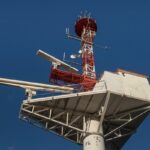Are you sick of your house or workplace having annoying Wi-Fi dead spots? Before rushing to call your internet provider for a costly plan upgrade, keep in mind that poor signal distribution, not a lack of internet speed, is the main cause of most connectivity problems. You don’t have to increase your monthly subscription to ensure the best WiFi network coverage solution. You can significantly improve the performance of your current network without paying the recurring costs of a premium internet package by making strategic changes and smart technological choices.
Optimize Your Router Placement
Strategic router placement is the most significant enhancement you can make. Your router should be placed in a central, high spot away from metal objects and walls that could block signals. Because they cause interference, stay away from cordless phones, microwave ovens, and other devices that use the 2.4GHz frequency. Signal strength across your space can be significantly increased with even minor adjustments of a few feet.
Upgrade to a Mesh Network System
Mesh networks remove dead zones without using more bandwidth on the internet. Mesh systems spread several access points across your area, forming a blanket of connectivity, in contrast to conventional setups that depend on a single router. These systems automatically switch between frequency bands and intelligently direct traffic along the quickest routes.
Extend Your Network with Range Extenders or Powerline Adapters
By rebroadcasting your current signal, WiFi range extenders provide a cost-effective solution for targeted solutions to particular dead zones. Powerline adapters, on the other hand, get around physical barriers by using the electrical wiring in your house to send internet signals. For homes with multiple stories or areas with concrete walls, this solution works especially well. Look for dual-band models that support the most recent WiFi standards when choosing extenders.
Optimize Channel Settings and Update Firmware
Channel congestion has the potential to severely impair performance in areas with high population densities. Using their administrative interface, the majority of contemporary routers let you manually choose which channels to use. You can find the least crowded channels and make the necessary adjustments by using WiFi analyzer apps. Additionally, you can take advantage of security patches and performance enhancements that manufacturers release over time by routinely updating the firmware on your router.
Consider Signal Boosters and Antennas
A focused solution to coverage problems is to install signal boosters or upgrade the antennas on your router. Higher gain external antennas can greatly increase the range of your router in particular directions. As an alternative, WiFi signal boosters strengthen current signals so they can more easily pass through floors and walls. These solutions can produce amazing results for a fraction of the price of new equipment, but they usually require more technical expertise.
Final Thoughts
It’s not always necessary to increase the bandwidth of your internet plan in order to improve your WiFi coverage. You can revolutionize your WiFi experience without having to pay for continuous plan upgrades by focusing on coverage optimization through strategic technology deployment, signal boosting, and equipment placement. By selecting the ideal WiFi network coverage solutionfor your particular setting, you can maximize each megabit that your current plan offers and enjoy consistent, dependable connectivity throughout your space.
FAQs
Will my internet speed be slowed down by a WiFi extender?
Although some signal loss (10–15%) is usually present when compared to a direct connection, the majority of contemporary dual-band extenders minimize speed reduction.
For typical home coverage, how many mesh network nodes are required?
Depending on design and construction, two to three nodes usually offer complete coverage for homes under 3,000 square feet.
Is it possible for walls to block WiFi signals?
Yes, certain insulating materials, brick, concrete, and metal in particular can greatly weaken signals or block transmission.



